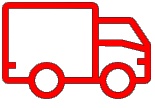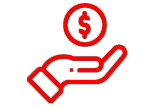When your car breaks down beyond repair or simply won’t start anymore, you might think it’s worthless. However, learning how to sell non running car effectively can still put hundreds or even thousands of dollars in your pocket.
Whether you’re dealing with engine failure, transmission problems, or accident damage, there are proven strategies to maximize your return when you sell dead vehicle that’s taking up space in your driveway.
Understanding the Value in Non-Running Vehicles
Before exploring how to sell non running car successfully, it’s important to understand that even junk car non operational vehicles retain significant value. Non-running cars are valuable for several reasons:
Scrap Metal Content : The average vehicle contains 2,000-3,000 pounds of recyclable steel, aluminum, and other metals. Current scrap prices directly influence your vehicle’s base value.
Usable Parts : Even if your engine is dead, components like transmissions, catalytic converters, airbags, electronics, and body panels may still function perfectly and command good prices in the used parts market.
Restoration Projects : Some buyers specifically seek non-running vehicles for restoration projects, especially if the car is a classic, rare model, or popular among enthusiasts.
Core Components : Many parts serve as “cores” for remanufacturing, where companies rebuild components like alternators, starters, and transmissions.
Assess Your Vehicle’s Condition Thoroughly
The first step to sell dead vehicle effectively involves conducting a comprehensive assessment. Document everything about your car’s condition:
Mechanical Issues : Identify exactly why the vehicle doesn’t run. Is it the engine, transmission, electrical system, or multiple problems? Understanding the root cause helps you communicate accurately with potential buyers.
Exterior Condition : Note any rust, dents, scratches, or accident damage. Take detailed photos from multiple angles, including close-ups of any damage.
Interior Assessment : Check the condition of seats, dashboard, electronics, and other interior components. Many buyers value cars with intact interiors even if the engine is dead.
Valuable Components : Identify any high-value parts that might increase your vehicle’s worth, such as:
- Catalytic converters
- GPS navigation systems
- Premium sound systems
- Custom wheels or tires
- Leather seats
- Sunroofs or convertible tops
Research Your Vehicle’s Market Value
Understanding your car’s potential value is crucial when you sell non running car. Use multiple resources to establish a baseline:
Online Valuation Tools : While tools like KBB or Edmunds focus on running vehicles, they provide starting points. Expect to receive 10-30% of the running vehicle value for junk car non operational sales.
Completed Sales Research : Check completed listings on eBay, Craigslist, and Facebook Marketplace for similar non-running vehicles to understand realistic pricing.
Scrap Value Calculation : Research current scrap metal prices in your area and estimate your vehicle’s weight to establish a minimum value floor.
Parts Value Assessment : For vehicles with valuable components, research individual part prices to understand if parting out might be more profitable than selling whole.
Explore Multiple Selling Channels
To sell dead vehicle for the best price, consider all available options:
Junk Car Buyers and Removal Services
These businesses specialize in purchasing non-running vehicles and typically offer:
- Free towing services
- Quick transactions (often same-day)
- Cash payments on pickup
- Hassle-free paperwork handling
While convenient, these buyers often offer lower prices since they need to account for processing costs and profit margins.
Auto Salvage Yards
Salvage yards focus on reselling usable parts and may offer better prices for vehicles with valuable components. They’re particularly interested in:
- Popular vehicle models with high parts demand
- Newer vehicles with functioning components
- Vehicles with expensive parts like airbags or catalytic converters
Online Marketplaces
Platforms like Craigslist, Facebook Marketplace, and eBay allow you to reach private buyers who might pay premium prices for specific vehicles. This option requires more effort but can yield higher returns.
Specialty Buyers
Some buyers focus on specific types of vehicles:
- Classic car enthusiasts seeking restoration projects
- Mechanics looking for parts cars
- Export businesses shipping vehicles overseas
- Hobbyists interested in particular makes or models
Prepare Your Vehicle for Sale
Proper preparation can significantly impact how much you receive when you sell non running car:
Clean the Vehicle : Even though it doesn’t run, a clean car creates a better impression and makes it easier for buyers to assess condition and value.
Gather Documentation : Collect the title, registration, maintenance records, and any receipts for recent repairs or parts. Having proper paperwork streamlines the selling process.
Remove Personal Items : Thoroughly search the vehicle for personal belongings, including:
- Items in glove compartments and consoles
- Belongings under seats or in door pockets
- Trunk contents
- Garage door openers or toll transponders
Consider Part Removal : If you have mechanical skills, removing valuable components before sale might increase overall returns. However, be cautious about removing parts that could reduce the vehicle’s appeal to buyers seeking complete cars.
Create Compelling Listings
When advertising your junk car non operational vehicle, honesty and detail are crucial:
Write Detailed Descriptions : Clearly explain what’s wrong with the vehicle, what works, and any recent repairs or maintenance. Transparency builds trust and attracts serious buyers.
Include Quality Photos : Take multiple high-resolution photos showing:
- Overall vehicle condition from various angles
- Interior condition
- Engine bay
- Any damage or problem areas
- Valuable components or features
Highlight Positive Aspects : Even non-running cars have selling points. Mention good tires, functioning electronics, clean interiors, or valuable parts.
Be Upfront About Issues : Clearly state why the vehicle doesn’t run and any other known problems. This honesty prevents wasted time with unrealistic buyers.
Negotiate Effectively
When buyers show interest in your sell dead vehicle listing:
Get Multiple Offers : Don’t accept the first offer. Contact several potential buyers to ensure competitive pricing.
Understand Buyer Motivations : Different buyers have different needs. Parts dealers focus on valuable components, while scrap buyers care mainly about weight and metal content.
Be Realistic : While you want maximum value, understand that non-running vehicles have limited markets and pricing constraints.
Factor in Convenience : Sometimes slightly lower offers from buyers providing free towing and immediate payment are worth accepting over higher offers requiring you to arrange transportation.
Handle the Transaction Properly
Once you’ve agreed on a price to sell non running car:
Verify Buyer Credentials : Ensure the buyer is legitimate, especially for cash transactions. Check business licenses and read reviews when possible.
Prepare Proper Documentation : Have the title ready for transfer and understand your state’s requirements for bill of sale and other paperwork.
Arrange Safe Payment : For large transactions, consider meeting at banks or using secure payment methods. Cash is common for junk car sales but verify large bills carefully.
Complete Title Transfer : Properly sign over the title and follow your state’s procedures to avoid future liability for the vehicle.
Cancel Insurance and Registration : Notify your insurance company and DMV about the sale to avoid ongoing costs and liability.
Avoid Common Mistakes
When learning to sell dead vehicle effectively, avoid these pitfalls:
- Accepting the first offer without shopping around
- Failing to remove personal items before pickup
- Not having proper documentation ready
- Overlooking valuable parts that could be sold separately
- Working with unverified or unprofessional buyers
- Forgetting to cancel insurance and registration
Conclusion
Successfully selling a non-running vehicle requires understanding its value, preparing properly, and exploring multiple selling channels. While junk car non operational sales might seem straightforward, taking time to assess condition, research values, and compare offers can significantly impact your final payout.
Remember that even dead vehicles have value in their parts and materials. By following these comprehensive tips and approaching the sale strategically, you can maximize returns and efficiently dispose of your non-running vehicle while putting cash in your pocket.
The key to success when you sell dead vehicle lies in preparation, research, and patience. Don’t rush the process – taking time to understand your options and present your vehicle effectively can mean the difference between a few hundred dollars and a much more substantial payout.


